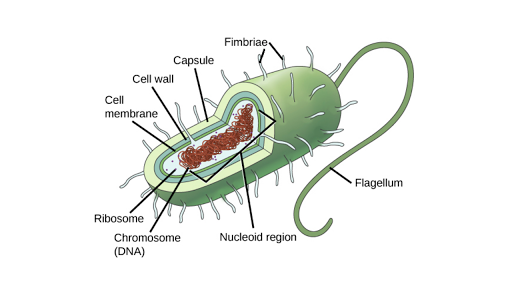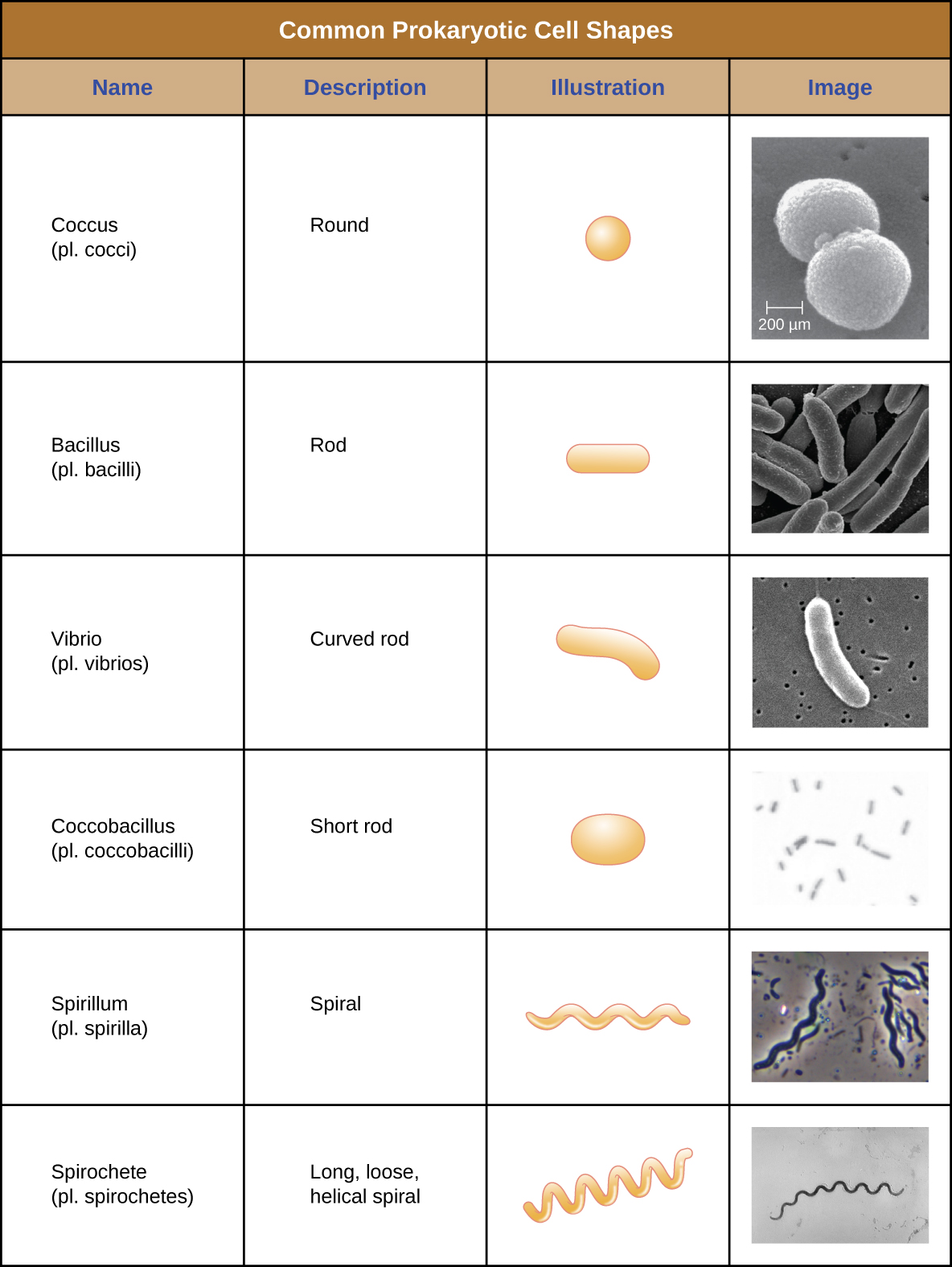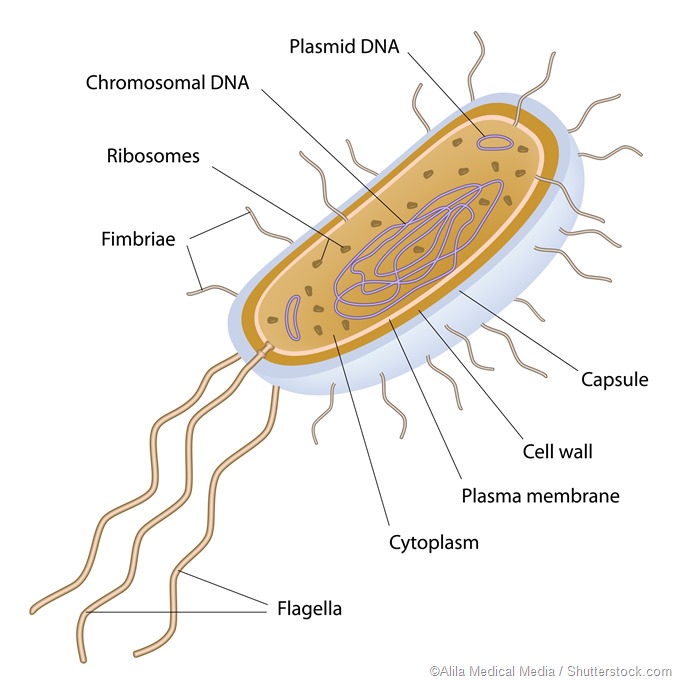8 Which of the Following Are Shapes of Prokaryotic Cells
Nerve Cells are long and branched because they need to make contact with other nerve cells and carry signals over long distances from brain to other parts of the body Muscle cells are spindle shaped because muscles contract and relax. At 0150 μm in diameter prokaryotic cells are significantly smaller than eukaryotic cells which have diameters ranging from 10100 μm Figure 3.
Which part of the cell protects it from the outer environment.

. Identify the three most common shapes of prokaryotic cells. The four basic shapes are. Bacillus Lactobacillus Cocci- Spherical shaped eg.
Cells can be of many different shapes Some common shapes of cells are Spherical Cells They are round in shape Example - Red Blood Cells in Humans Spindle Cell They are elongated like a spindle Example - Muscle Cell in Humans Elongated Cell They are shaped like a branch of a tree Example - Nerve Cells in Humans. The figure represents an animal cell. A All are prokaryotic.
Example - Nerve Cells in Humans. The lesson covers the complete explanation of class 8 Chapter 8 Cell Structure and FunctionTopics covered are cells discovery of cells cell shape and size cell numbers basic structure of cell cell organelles and the differences between plant and animal. Staphylococcus Streptococcus Vibrio- Comma shaped eg.
The cell wall of the bacteria gives them different shapes. 1 mark Mitochondria. The shape of the cell is so that it can help in its function.
Cocci A bacterium that is spherical or ovoid is called a coccus Plural cocci. 3 Which of the following is not true about protozoa. The four most common designs that bacteria have are.
Cell is the basic structural unit of living organisms. Label the parts A to E in the given as Fig. Prokaryotic cells come in a variety of shapes.
Cytoplasm The cytoplasm is a gel-like component that contains enzymes salts and cell organelles. This structure defines a beneficial 564 The mechanics of shape in prokaryotes cell shape confines the cell membrane so that bacteria do spherical than non-motile bacteria are 14. C All require organic material for growth.
Cell Structure and Function Class 8 Science Chapter 8 as per NCERT Book used in CBSE and other Schools. A microbiologist looks into a microscope and sees the following bacterial cells. The small size of prokaryotes allows ions and organic molecules that enter them to quickly spread to other parts of the cell.
Some are spherical but seldom are seen as a single cell. D All grow using sunlight and carbon dioxide. Yes hens egg is a single cell.
D Respiratory enzymes contained in. Vibrio cholera Spirilla- Spiralhelical shaped eg. Similarly any wastes produced within a prokaryotic.
A They have rigid cell walls. Some microorganisms are composed of prokaryotic cells whereas others are composed of eukaryotic cells. Eukaryotic cells have a nucleus surrounded by a complex nuclear membrane that contains multiple rod-shaped chromosomes.
Exit in a variety of different cell shapes. MorphologyShape of Prokaryotic cells. B All are multicellular.
E All are plants. Spirochetes spiral with flexible cell wall axial filament. Prokaryotes CellShapes Most bacteria are classifies according to shape.
The capsule enables the cell to attach to surfaces in its environment. Does it represent a prokaryotic cell or a eukaryotic cell. The white part of egg is called albumen.
Classify the following terms into cells tissues and organs and write in the tabular. The genetic material DNA in prokaryotic cells has a circular shape. This is a eukaryotic cell.
Most prokaryotes have a peptidoglycan cell wall and many have a polysaccharide capsule. Spirochaete - spiral shaped. The shape of amoeba is irregular.
It acts as a protective shield of the cell. Sounds like cox-eye spherical 3. Bacilli rod-shaped 2.
In the cell the plasma membrane protects the body of the cell from the outer environment. Spirilla spiral with rigid cell wall flagella b. Terms in this set 13 Prokaryotic Microorganism.
A A cell membrane usually surrounded by a cell wall. Cell Membrane This membrane surrounds the cytoplasm and controls the flow of chemicals into and out of the cells. Pili These are hair-like protrusions on the surface of other bacterial cells.
The bacteria are classified based on their shape as. Prokaryotic cells have various shapes. Bacilli - rod shaped.
All plant cells and animal cells are eukaryotic. Cell membrane is the outermost layer of animal cell. B They are classified by their method of locomotion.
Does it represent a plant cell or an animal cell. The cell wall acts as an extra layer of protection helps the cell maintain its shape and prevents dehydration. Some prokaryotes have flagella pili or fimbriae.
B An internal cytoplasm with ribosomes a nuclear region and in some cases granules c A variety of external structures such as capsules flagella and pili.

Prokaryotic Cells Article Khan Academy

3 2 Unique Characteristics Of Prokaryotic Cells Biology Libretexts

3 2 Unique Characteristics Of Prokaryotic Cells Biology Libretexts

Comments
Post a Comment